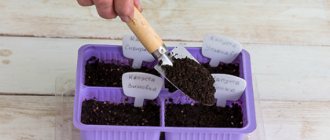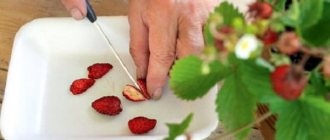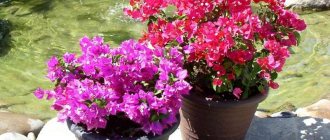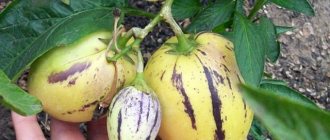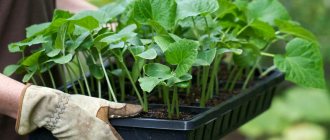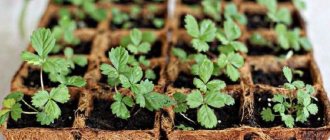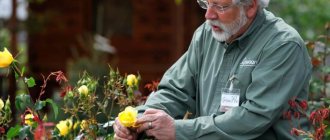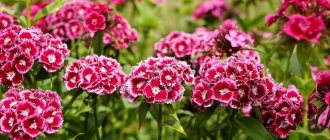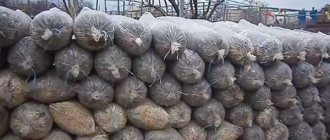Growing exotic fruits indoors always arouses interest; it is nice to get a harvest of unusual fruits. Hobbyists successfully grow citrus fruits, pomegranates, figs, kiwis and many other fruit plants, including feijoas, on windowsills. In indoor cultivation, the Feijoa selloviana Berg variety takes root better, which, with proper planting and proper care, is capable of producing annual harvests. In the photo, feijoa looks like a spreading tree with pubescent leaves. This article is all about maintaining and propagating culture at home.
Guest from South America: feijoa - varieties and varieties
Feijoa grows naturally on the South American continent; the plant belongs to the Myrtaceae family.
The plant was first described in the 19th century by the Brazilian-born botanist de Silva Feijo, and the plant was given his name. The feijoa genus includes only three natural plant varieties, only one variety of which, Feijoa selloviana Berg, is widely cultivated to produce healthy fruits of unusual appearance and taste. The medium-sized fruits have bright emerald green flesh, which tastes like both pineapple and strawberry. Feijoa fruits are rich in minerals and vitamins; they are used to treat a number of diseases.
Feijoa selloviana Berg
Feijoa in nature reaches a height of 4 meters. The spreading crown of the tree is covered with hard glossy leaves, with thick felt pubescence on the back side of the leaf blade. Slightly lower than its counterparts is the feijoa species (Acca zellova), which, due to its small growth, allows you to obtain a harvest of useful fruits in indoor cultivation.
Contraindications
It is not recommended to consume the fruit for those who are overweight. Also, it is prohibited for use by patients with diabetes. Feijoa contains a huge amount of sugar. Contraindications include individual intolerance to the product. Use with caution if you have hyperthyroidism.
Even if there are no contraindications, you should not eat a very large amount of fruit at a time, since this may cause more frequent heartbeat, temperature fluctuations, anxiety, and in certain cases, nervous disorders. However, for a proportion of people, overeating such a product leads to depression and a significant decrease in ability to work.
As you can see, there is nothing complicated about how to grow feijoa at home. The main thing is to choose the right variety and take good care of the plant. Then it will amuse you with delicious fruits.
Planting feijoa for growing indoors
Planting and replanting feijoas should be approached with special delicacy. Numerous tree branches, even if they are already mature, easily break under the slightest load. Young plants are replanted annually, starting from the third year after planting - once every 2-3 years.
Important! The container is selected with a slight increase in volume.
It is unacceptable to immediately plant a tree in a large pot - a small root system is not able to master the entire earthen ball. When watering a plant, water stagnates in the pot; wet soil negatively affects the condition of the roots.
When replanting a healthy plant, it is not necessary to completely replace the nutritious soil mixture; it is enough to simply transfer the plant into a larger pot with the addition of fresh soil. Diseased plants, especially if the feeding roots are damaged, must be removed from the old pot, acidified soil removed from the roots, and diseased parts of the root system cut out.
Feijoa sprouts: 10th day after planting
To replant feijoa, a special soil mixture is prepared: turf, leaf and humus soil are taken in equal parts with the addition of peat chips and coarse river sand. It is useful to put a layer of drainage at the bottom of the pot. It is most convenient to use ready-made expanded clay, which is sold in flower and garden stores.
Important! The root collar of a feijoa tree should be located strictly above the ground; it is not allowed to bury the seedling when transplanting.
Harmful insects
It’s not enough to know how to grow feijoa at home. You also need to know how to control pests. The main enemies of feijoa are red mites and false scale insects. The former usually feast on stems and leaves. Keltan mixture is the main weapon against these insects (you need to take 2 g per 1 liter of water). We recommend spraying in the evening, otherwise the plant may get burned due to the sun's rays. After the entire procedure, the solution is valid for 40 days, therefore, re-treatment is not required. It is recommended that the plant be given a shower so that there are no mites on the plant.
Pseudoscale insects like to be found along the midrib on the outer surface of leaves. A mixture of Karbofos (several grams per liter of liquid) is the main remedy against pests. The leaves are sprayed on both sides with this solution. However, in this case, the procedure must be repeated. The break between treatments is several days.
Caring for indoor feijoa trees
Look at the photos of indoor greenhouses - healthy feijoa trees serve as decoration for a home garden. The crop grows well and bears fruit in an apartment if the plants are provided with certain conditions:
The light-loving culture requires good lighting. Akka zellova grows well on windows facing south and southeast.
Advice! In winter, plants must be provided with maximum illumination and, if necessary, supplemented with photo lamps.
If there is insufficient lighting, the tree quickly begins to shed its leaves; the consequences of such stress cannot be quickly overcome.
Feijoa flowering
The pot with the plant must be periodically well watered - even a slight overdrying of the earthen clod can lead to the death of the root system and the falling of leaves.
Advice! It is most convenient to water the tree from above, and water until water appears in the pan. Water should not be poured out of the trays; the plant will quickly absorb it through the drainage hole.
Spraying feijoa on the leaves gives excellent results; it is especially important to bathe the tree crown in the dry summer months.
Illumination
If you know how to grow feijoa at home and have done everything correctly, sprouts will appear in 30-35 days. Immediately after the seeds germinate, remove the glass, and as soon as the sprouts start to rise, remove all weak shoots. Feijoa is a sun-loving crop, so young plants need to be provided with bright but diffused light. If the seedlings appeared in the spring, then simply place the pots on a western or eastern window. If your seedlings appeared in winter or autumn, illuminate them with a photo lamp. Remember that young shoots will stretch out due to lack of light.
Feijoa feeding: recommended fertilizers
In the first years, when the plants are annually transplanted into fresh soil, the tree has all the vitamins and nutrients necessary for nutrition. Additional nutrition must be provided to the plant from the third year of life.
Fertilizing is applied in spring and autumn; foliar feeding along the crown is allowed. Starting in spring, plants are fertilized according to the following scheme: nitrogen, phosphorus and potassium alternate every 15 days. Organic fertilizers (for example, decomposed horse manure) are excellent for providing nitrogen. In liquid form, the fertilizer is prepared from manure diluted and infused in water. Ratio 1:10.
Fertilizers are necessary for active crop growth
Superphosphate for feeding can be used in granular form (embedded in the soil), as well as in liquid form, for which 1 tsp is dissolved. superphosphate per liter of water. The solution is heated to a boil, after cooling, diluted with water, bringing the volume of fertilizer to 2 liters.
Potassium fertilizing stimulates the development of fruits, so they are timed to coincide with the fruiting period. The best results and complete safety for plants are noted when using a special solution for feeding - ash extract. For 1 liter of water add 1 tbsp. l. wood ash from deciduous trees or straw. Leave the solution for about a week, then filter it and use it to fertilize indoor plants.
Advice! Any fertilizers are applied only to moist soil, for which the plants are pre-watered (about 1 day before adding nutrients).
In winter, fertilization is stopped before the beginning of the growing season.
Comfortable temperature conditions
Feijoa is a hardy crop because it is a cultivated fruit tree. Thanks to this, it perfectly adapts to different climatic conditions. But it’s still better to follow the recommendations of gardeners and not experiment with the regime. First of all, temperature fluctuations affect the ability of Sellova's acca to bear fruit. Optimal temperatures for feijoa:
- +18-20 degrees – summer period;
- +10-14 degrees – for the wintering period (short cold spells are allowed).
Wintering is an important period in the life cycle of a plant.
This is a time of rest, so it is extremely important to observe the specified temperature regime and avoid its sudden jumps and changes.
The maximum temperature threshold is approximately 23 degrees Celsius. It is not recommended to keep Akka Sellova in hotter conditions. Otherwise, it will lose its decorative effect, will grow more slowly, and the occurrence of diseases is possible. But if the summer turns out to be hot, there is no need to worry. You just need to pay more attention to the well-being of the feijoa, water it regularly and prevent direct sunlight from falling on the foliage. Then the culture will delight its owner with excellent appearance and health. Also in summer it is worth taking the plant out onto the balcony or even outside if it is kept in the country. But you always need to remember about the shadow, or at least its arrangement.
Feijoa propagation: how to get new plants
It should be remembered that to produce fruit you will need two feijoa trees - the plant is cross-pollinated. But even if this condition is met - the presence of two adult specimens - pollination is very difficult to achieve. When grown indoors, you will need to purchase seedlings of parthenocarpic varieties that pollinate themselves.
It is possible to propagate feijoa by cuttings and fresh seeds, but it is worth remembering that the tree belongs to the Myrtaceae family, all plants of which take root during vegetative propagation with great difficulty. You can start cuttings in the second half of April. It is best to take cuttings not from old shoots, since their coarse branches are not suitable for rooting. But too young branches with soft bark are also not suitable for cuttings.
Feijoa can be propagated by seeds or cuttings
Suitable feijoa branches are cut into cuttings with up to 3 internodes. For better rooting, the lower cut is treated with growth stimulants for accelerated root formation, “Kornevin” is suitable; "Gumat"; "Epin."
The treated cuttings are planted in a greenhouse with fertile light soil (a mixture of nutrient soil, sand, vermiculite or perlite).
Advice! When rooting feijoa cuttings, it is important to ensure a constant high temperature - not lower than +25 C.
Don’t be upset if less than half of the cuttings take root – the crop is one of the difficult-to-root indoor plants. And of course, you need to be patient - the rooting of cuttings takes even a month.
Young cuttings begin to bloom in the 3rd year, but may not set fruit. Seed propagation is an even longer process - seedlings can bloom in 5-6 years.
Regularly treat crops against pests
Humidity and temperature
Feijoa tolerates both high (up to +30C) and low, negative temperatures equally well. But it is desirable that in winter the air temperature does not exceed +12C, and in summer – +20C.
Important. With proper care and watering, the plant will perform well even at higher temperatures.
If possible, in summer it is better to place the feijoa pot outside or on an unglazed balcony. All year round it is necessary to maintain high air humidity in the apartment, about 80%. To ensure this, you will have to spray the leaves and roots of the plant daily.
The leaves of the Feijoa plant must be regularly sprayed with water.
Akka zellova in indoor culture: diseases and pests
Healthy feijoa trees are pleasing to the eye; in case of diseases and pest invasions, the leaves of the plant quickly fall off. Take a look at the photos of diseased plants and how quickly their appearance changes. The red spider mite, which breeds when there is insufficient air humidity, especially in the summer, is especially annoying to the crop. The disease can be prevented by following all agrotechnical measures for caring for trees. The destruction of ticks is carried out using special preparations: “Neoron”; "Aktellik"; "Fufanon"; "Fitoverm".
Another pest that feijoa suffers from is the false scale insect. The pest spreads throughout the plant, sucking juices from the leaves. The drug “Actellik” will help get rid of scale insects, which needs to be sprayed on the crown several times.
Benefits of fruits
Feijoa berries are a storehouse of useful vitamins and microelements.
The use of berries is useful for diseases of the stomach and intestines, liver and kidneys, pancreas and thyroid glands, diabetes and atherosclerosis.
The fruits also relieve inflammation well and help in the fight against E. coli and Staphylococcus aureus. And if you eat 2-3 fruits daily, you can perfectly strengthen your immune system and heart muscle.
Despite their exotic nature, they do not cause allergic reactions. But do not forget that the safe consumption rate for humans is 5 berries per day.
